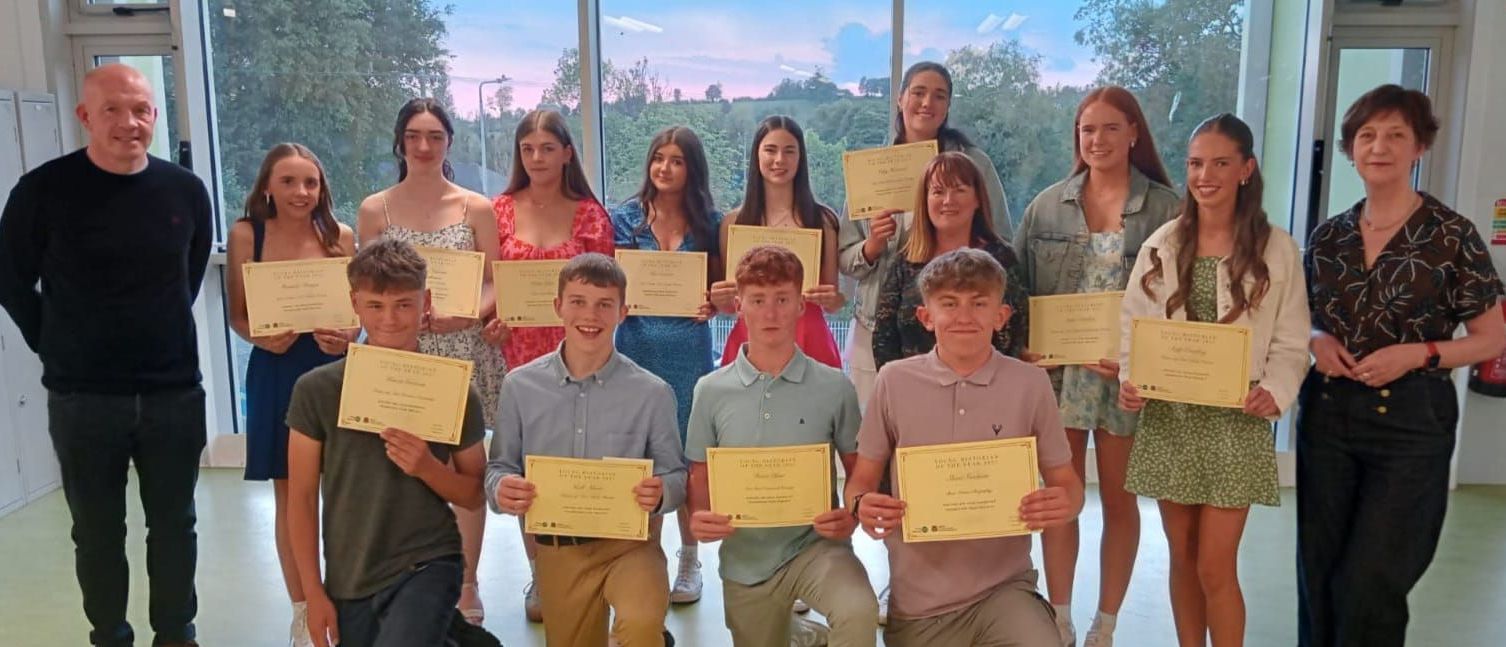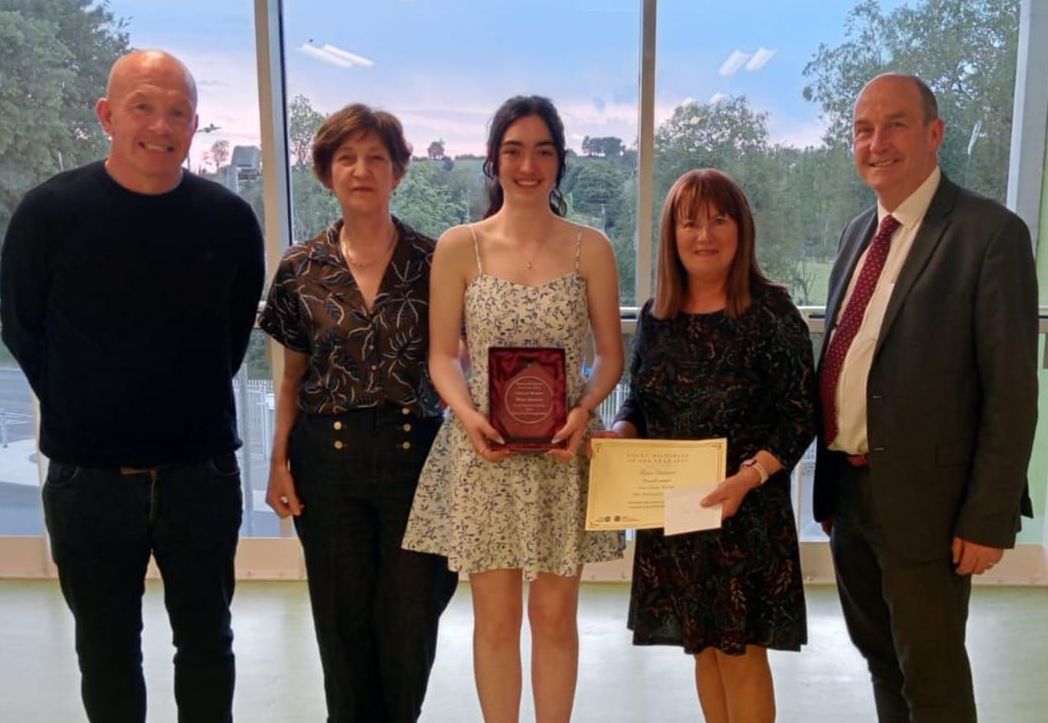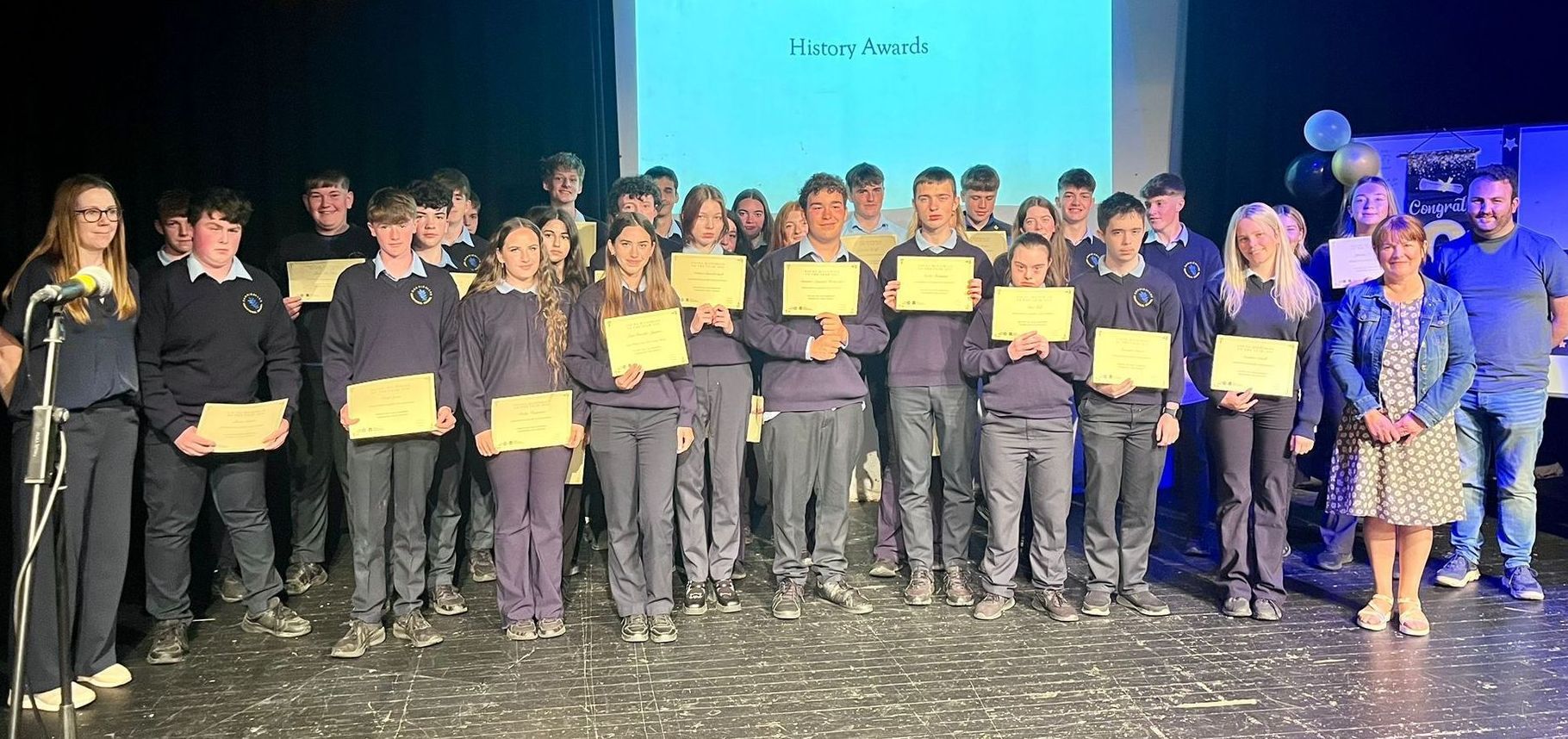YoungHistorian appreciates and acknowledges the sponsorship and support of Leitrim County Library Service through Leitrim County Council.
YH Award Winners
This page lists YH winners over the years, and includes articles published in the Leitrim Observer.
To read some past entries click on the Past submissions tab or click here >>>
2025 Young Historian winners



2025 Young Historian Winners
(click on the title to read the submission)
- Rose Gannon, BCS: The Townland of Crummy Over The Last 200 Years, Overall Winner, Best Leitrim History, Best Historical Geography
- Unai Arechavaleta Zurita, CVS: Troubled Waters. The Spanish Armada in the West Coast, Best Early Modern History, Best non-Leitrim History
- Abby Halstead, BCS: What was my great-grandad's role in the IRB, Best Irish Revolutionary History
- Jasmine Watt, LAC: The Importance of the Haka in Māori Culture and What it Means to Me, Best World History
- Katie Kane, BCS: The death of Thomas Mulvey on the narrow gauge railway, Best Social History
- Liam Mannion, CVS: A community in crisis the effect of the Don Tidey kidnapping had on the local community, Best Contemporary Irish history
- Reece Prior, BCS: Bencroy Coal Mines Aughnasheelin 1929-1990, Best Built/Industrial Heritage
- Shane Greenan, BCS: Lagos to Leitrim: The life of Bishop Francis O'Rourke, Best Memoir/Biography
- Gabriela Perez, BCS: My great-grandfather and his role at the Spanish civil war, Joint Best 20th Century History
- Leire González Jiménez, CVS: The Spanish civil war in Andalucia, Joint Best 20th Century History
- Hannah Morgan, BCS: One Uniform, Three Generations: A Family's Journey Through Irish History, Joint Best Family History
- Mia Evesson, BCS: My Family's 100+ Year Old Christening Gown, Joint Best Family history
Runners-up and highly commended
- Anna Conefrey, BCS: Exploring my family's history and memories from the Irish Civil War; Runner-up: Irish Revolutionary History
- Aoife Conefrey, BCS: The Captivating Life of Mick Carolan; Runner-up: Family History
- Kenzie Greenan, BCS: Fenagh, Co. Leitrim; Runner-up: Historical Geography
- Niall Ahern, BCS: Daniel Ahern Life and role in World War 1 (1891-1976); Runner-up: Family History
- Sean Fallon, LAC: Past, Present and Future of North West STOP; Highly Commended
Transition Year students delve into their history
The 2024 Young Historian awards were presented recently to Transition Year students in three Leitrim schools. The judges noted that the selection of winners is increasingly difficult given the high standard of many entries. Great credit goes to the teachers: Seamus Mullen at Ballinamore Community School (BCS); Matt McVeigh and Norma Comyns at Carrigallen Vocational School (CVS); and Brian Flannery at Lough Allen College (LAC).
Personal connection
The judges congratulated the students who connected personally with their story, were curious, interrogated their sources, and were able to tell their story well. Mary Conefrey noted that ‘the standard of submissions has grown year on year’. Seamus Mullen (BCS) noted how the students who got most from the programme were those with the curiosity and tenacity to delve deeper into their topic, and that the students ‘develop invaluable research and editing skills that are essential at third-level as well as senior cycle’.
Diverse topics
As can be seen from the list of winners, the topics were again wide-ranging. The overall winner and Best Leitrim History was Rose Gannon (BCS) for ‘Townland of Crummy Over The Last 200 Years’, which the judges said was insightful, comprehensive and well-structured, and serves as a template for researching townland histories. Best Early Modern and best non-Leitrim History was won by Unai Arechavaleta Zurita (CVS), for his creative animation of the story of the Spanish Armada in Ireland. The projects will be lodged in the Leitrim County Library Archives for future researchers.
AI
Presenting the awards in Ballinamore, Fiona Slevin said that they could see students beginning to use AI (LLMs). She told the audience that AI will change much for students and teachers and the future of work. She said ‘in a world where we can all generate right answers, the world will belong to the people who ask the right questions – and to those who can separate fact from fiction and communicate their story convincingly; in other words the skills of a historian’. As Brian Flannery (LAC) observed, 'this competition sharpens critical thinking and research skills, which fosters a deeper appreciation of the past'.
The Young Historian programme was initiated by Fiona Slevin and Natalie Fryde in 2021, and is supported by Leitrim County Library. All entrants received certificates, and all category winners received cash vouchers while the overall and school winners were presented with engraved Leitrim Crystal plaques – all sponsored by Leitrim County Library.
Read about 2024 entries and winners here >>>
Read about
2023 entries and winners here >>>
Read about
2022 entries and winners here >>>
Read about 2021 entries and winners here >>>
Young Historian 2024
In 2024, four schools participated in the programme: Ballinamore Community School (BCS), Carrigallen Vocational School (CVS), Lough Allen College (LAC) in Drumkeerin, and Mohill Community College (MCC).
Nicole Kellett won the overall prize for The Ballinamore Railway & how it shaped my life, a well-structured, informative and reflective history of the Ballinamore railway and how it shaped the town and Nicole’s own family through the generations.
See the full list of 2024 winners here >>>
Young Historian 2023
In 2023, three schools participated in the programme: Ballinamore Community School (BCS), Carrigallen Vocational School (CVS) and Lough Allen College (LAC) in Drumkeerin.
Riain MacManus won the overall prize for his account of the life of his grand-uncle Terence Hugh Keegan based on an interview with his great-aunt Kathleen.
See the full list of 2023 winners here >>>
Young Historian 2022
In 2022, five schools participated in the programme.
Brianna Faughnan won the overall prize for her detailed account of the life and deportation of Jimmy Gralton. Fiona Slevin said ‘Brianna’s submission stood out for its originality, diligent research and storytelling’, and she impressed the judges with her mature, sophisticated approach to research and her fearlessness in striving to tell an accurate, unbiased story.
See the full list of 2022 winners here >>>


